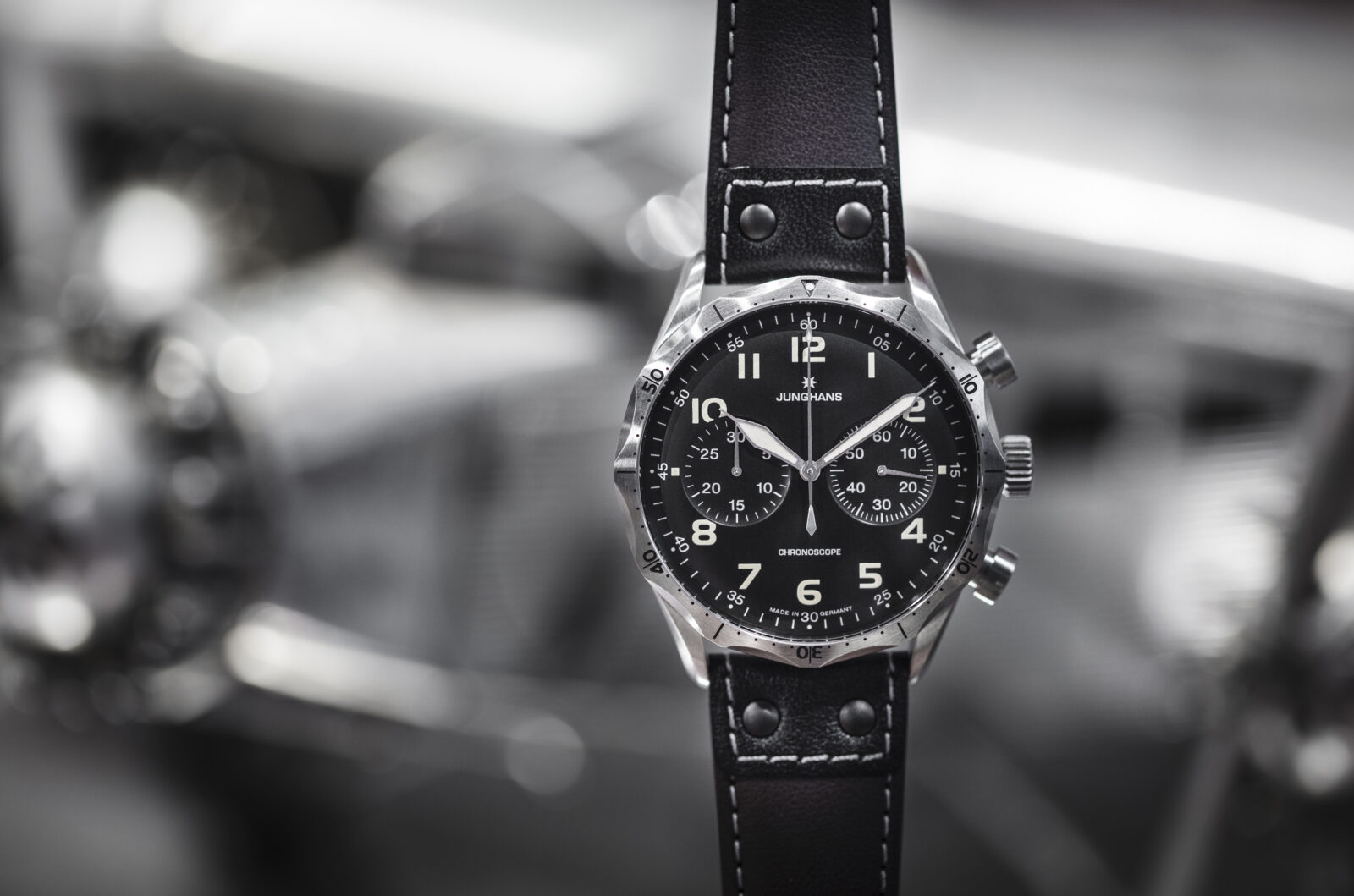In summer of 2019, Watchuseek team visited Junghans museum in the Black Forest region. Remember the good old days when we could travel and drink beer sitting at the same table. Ann-Katrin, Head of Trade Marketing of Junghans, was kind to take us on a private tour of the museum and present to us all the Junghans watches. The museum provided us with technical drawings of the chronograph, all the inner workings of J88 movement, and finally the pristinely restored examples of the pilot watches. Michael Stuffler, Watchuseek resident expert on German watches, and I reconfirmed our affinity for the J88 pilot chronograph. We decided that day to place Meister Pilot, Junghans’ homage to J88 Pilot, on our short list for future purchase. Michael recently made his acquisition, so we decided to combine the brief history and review of the flieger.

The Junghans J88/0110 was delivered to the Bundeswehr in 1959 and its appearance is very similar to the two predecessors – Hanhart chronographs 417E (brass) and 417ES (stainless steel). The issued watch had “Versorgungsnummer” (supply number) of (6645-) 12-124-8591 or 12-120-9351. The J88 chronograph had a chrome-plated brass case, domed Hesalite crystal, radium numerals, and a rather small diameter of 38 mm. The Junghans Bundeswehr Chronograph was fitted with the beautiful 19 jewels column wheel caliber, commonly known as the Caliber J88, which had been sitting in a Junghans drawer since the end of the Second World War.
The J88 movement does not feature the flyback complication and is the only manual chronograph movement delivered to the Bundeswehr that doesn’t feature a flyback complication. Junghans produced the J88 from 1950 until the mid-60’s and after supplying the watches to Bundeswehr, it later sold them to the public. Model J88/0110 was quickly followed by the more common J88/0111 with the characteristic twelve-edged bezel. The German Airforce pilots loved the bezel since it was easy to operate, even with gloves. The twelve-edged bezel to this remains unique to Junghans. In 2016 the brand introduced a replica of the Model J88/0110 called “Meister Pilot”, an oversized pilot watch powered by ETA 2824/Sellita SW200 with a Dubois Depraz 2030 module.

The 43.3mm steel case on Meister Pilot features a very attractive bi-directional rotating bezel, with 12 distinctive concave notches which references the aforementioned chronograph of the 1950s. The case comes in a satin-brushed finish, underlining its tool-watch aesthetic. The chronograph pushers are oval, a feature you do not see that often, and have long shafts. Due to their design, they are easy to operate. The non-screw-in crown is easy to grip and large enough to operate. The crown is signed with Junghans logo, a star with a J in the center. The bi-directional dodecagonal bezel is the icing on the cake and the most recognizable feature of the Junghans Meister Pilot. Handling with gloves is not a problem at all. Even though the bezel is visually intriguing, it lacks a ratcheting bezel to avoid unintentional turns. The domed sapphire crystal has anti-reflective coating on both sides, which makes for great legibility.

The bi-compax layout on the matte black dial is well balanced. The recessed sub dials make for a good visual. The hands are in the correct length and contribute to good legibility. The center stop seconds hand is very slim and features a triangular tip along with an elongated counterweight. Junghans, the company known for Max Bill Bauhaus design, made the imprints on dial minimal and in miniature font. The printed Arabic numerals have a generous coat of eggshell color SuperLuminova luminous numerals (printed) and sword-shaped hour and minute hands. The case back is solid with engraving of compass rose, name of the model, reference number, and serial number. The convex shape with short curved down lugs, make the watch extremely comfortable to wear. A much-needed feature for those with a smaller wrist.

Meister Pilot is powered by J880.4 automatic movement, which is essentially an ETA 2824-2 or Sellita SW 200-1 base, with an additional Dubois-Depraz 2030 chronograph module. The pilot-style strap is in black 22mm calf leather with a solid steel pin buckle.
For a Flieger watch aficionado, Junghans Meister Pilot incorporates a lot of vintage vibe. With a retail price of $2,495, this chronograph is adequately priced and worthy of value the watch provides. The Junghans Meister Pilot can be an excellent choice if you are looking for a German made chronograph with a genuine history and an overall unique design.

Case: Stainless steel case, diameter: 43,3mm, height 14,4 mm, L2L: 49,5mm, lug width 22mm, 100m water resistant, bi-directional dodecagonal bezel (non-ratcheting), screwed back, 7 screws, with engraved compass rose.
Movement: Automatic J880.4 (ETA or Sellita base, SW 200-1 or ETA 2824-2 plus Dubois-Depraz 2030 chrono module; height 6,50mm, module height 2,90, diameter 30mm), 28.800 b/h, power reserve 38hrs, antimagnetic according to DIN 8309, Rhodium plating, stripes decor on rotor, and nicely finished bridge, stop seconds hand out of the center, permanent running seconds at 3
Dial/hands: Black with luminous numerals (printed) and sword-shaped hour and minute hands
Crystal: Domed sapphire crystal, anti-reflective coating on both sides
Strap: Black Leather strap with rivets (4) and solid pin buckle, grey stitching, Junghans logo engraved
Learn More About Junghans Meister Pilot Here
Editorial and Photo Credit: Mike Stuffler and Bhanu Chopra

